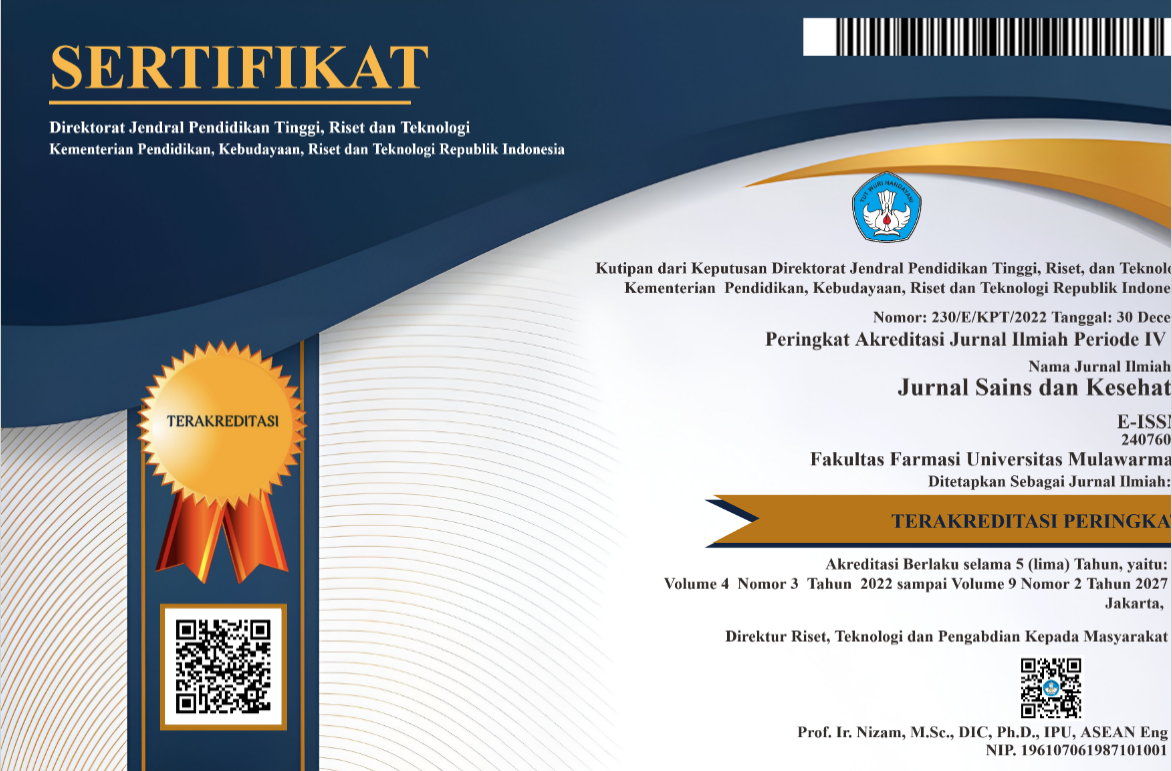Perbandingan Karakteristik Kimiawi Ekstrak Brokoli Terfermentasi dengan Variasi Konsentrasi Kultur Kambucha Sebagai Minuman Fungsional
Abstract
References
[1] Dufresne, C. 2000 Tea, Kombucha, and health: a review. Food Research International 33: 409-421.
[2] Singleton VL, Lamuela-Raventos RM, 1999. Analysis of total phenols and other oxi-dation substrates and antioxidants by means of Folin-Ciocalteu reagent. Methods Enzymol 299:152–78
[3] Eichhorn, P., and Knepper, T. P., 2001, Electrospray ionization mass spectrometric studies on the amphoteric surfactant cocamidopropylbetaine, Journal of Masspectrometry, Vol. 36, pp. 677 – 684.
[4] Jayabalan, R., Subathradevi, P., Marimuthu, S., Sathishkumar, M., and Swaminathan, K., 2008, Changes in free-radical scavenging ability of kombucha tea during fermentation, Food Chemistry, Vol. 109, pp. 227–234.
[5] Haslam, E., 2003, Thoughts on thearubigins, Phytochemistry, Vol. 64, pp. 61-73
[6] Nainggolan, J. 2009. Kajian pertumbuhan bakteri acetobacter sp. dalam kombucha rosela merah (hibiscus sabdariffa) pada kadar gula dan lama fermentasi yang berbeda. Tesis. Universitas Sumatra Utara: Medan.
[7] Chu, S.C., and Chen, C., 2006, Effects of origins and fermentation time on the antioxidant activities of kombucha, Food Chemistry, Vol. 98, pp. 502–507
[8] Greenwalt CJ, RA Ledford, KH Steinkraus., 1998. Determination and Characterization of the Antimicrobial Activity of the Fermented Tea Kombucha, LWT - Food Science and Technology, Volume 31, Issue 3, April 1998, Pages 291-296.
[9] Liu, C.H., Hsu, W.H., Lee, F.L., and Liao, C.C., 1996, The isolation and identification of microbes from a fermented tea beverage, Haipao, and their interactions during Haipao fermentation, Food Microbiol., Vol. 13(No. 6), pp. 407–415.
[10] Jayabalan, R, Malbasa, R.V., Loncar, E.S., Vitas, J.S., and Sathishkumar, M., 2014, A review on Kombucha teaMicrobiology,composition, fermentation, beneficial effects, toxicity, and tea fungus, Comprehensive Reviews in Food Science and Food Safety, Vol. 13, pp. 538-550.
[11] Piparo, E. L., Holger, S., Frei, N., Williamson, G., Grigorov, M., and Chou, H. J., 2008, Flavonoids for controlling starch digestion: Structural requirements for inhibiting human α-amylase, Journal of Medicinal Chemistry, Vol. 51, pp. 3555–3561
Downloads
Published
Issue
Section
How to Cite
Most read articles by the same author(s)
- Agustine Susilowati, Proses Emulsifikasi dan Pengeringan Pasta Campuran Sumber Asam Folat Alami dan Identifikasinya Dalam Perolehan Serbuk Suplemen Untuk Wanita Hamil , Jurnal Sains dan Kesehatan: Vol. 1 No. 9 (2018): J. Sains Kes.




